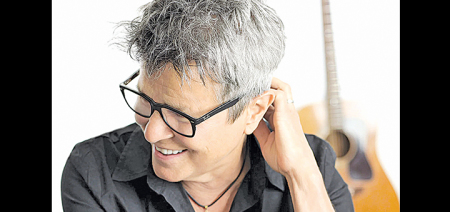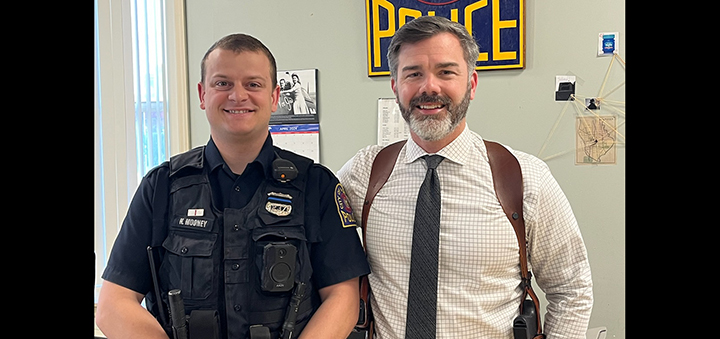Tilting At Windmills: The Case Of Sally Dancer
Published:
August 26th, 2022
By:
Shelly Reuben

Sally Dancer (all names changed) was a student in Boston studying to be a medical doctor. There were three things that made the investigation of her death so very sad, and all related directly to Sally herself.
The first was that immediately after she was found in her apartment over her father’s chiropractic office, her parents hired a fire investigator to inspect and photograph the premises. Within 24 hours of Sally breathing her last breath, Mr. and Mrs. Dancer had initiated a multi-million dollar lawsuit against the manufacturer of a clock radio located on the night table beside Sally’s bed.
Not exactly behavior one would associate with inconsolable grief.
The second disturbing thing about the case concerned Sally’s boyfriend, Donald Hoagland, also a medical student. Shortly after Sally’s death became known, Donald transferred to a medical college all the way across the country, and was not heard from again. He was never interviewed by the police or fire marshals, and he effectively disappeared.
The third disconcerting aspect of this case related to the post-mortem photos taken of Sally at the fire scene and in the morgue. In all, her face was virtually untouched by fire, and instead of looking dead, she appeared to be sleeping. Also, other than seeming to have a broken nose, she was beautiful.
Let’s look at each element individually, starting with Rupert Dix, the fire investigator hired by the Dancers, the photographs he took, the report he wrote, and the clock radio.
THE FIRE INVESTIGATOR
According to Rupert Dix, the fire in Sally’s apartment was caused by an unspecified defect in her clock radio. In his report, Dix contended that after the radio (magically?) began to burn, the plastic housing melted, flowed down the side of the night table to the floor, and – contrary to natural fire dynamics in which fire burns up and out – seared a big hole into the solid oak floorboards beside the bed.
Dix had no explanation for a second burn in the flooring midway along the left side of the platform bed; for the intense burning in the middle of the mattress; or for Sally on the mattress, whose left hand and left foot were completely consumed by flames.
As a rule, if two or more separate and distinct fires are unconnected by a path of fire (a burn pattern leading from one to the other), this is an indication that the fires were deliberately set. In other words, that investigators are dealing with arson.
Did Dix expect us to believe that liquefied plastic from the clock radio had leaped over pristine flooring to start a second fire alongside the bed? That it then jumped approximately three feet into the air, up and over Sally’s body, to start a third fire that consumed most of the mattress, and a good deal of Sally, too?
Despite Rupert Dix’s creative report writing, the plastic housing on the clock radio did not melt. Heat from the fire distorted it, so it looked something like a caved-in cake. However, “liquefied plastic” was a myth. In fact, the paper label on the underside of the unit was unburned and easy to read, and the interior electric components, which supposedly short circuited, were completely undamaged by fire.
Two years after the fire, Charlie King was brought into the case by the radio’s manufacturer. Because of the delay, we had to work from fire reports, post-mortem records (the fire occurred just past midnight on New Year’s Eve, the morgue was understaffed, and no autopsy was performed), and stacks of excellent photographs taken by police and fire marshals, as well as by the experts Mrs. and Mrs. Dancer hired.
It should be noted that until Charlie began to investigate Sally Dancer’s demise, at no time was arson suspected.
THE BOYFRIEND
When Charlie was studying post-fire photographs of Sally Dancer, he commented, “This is a pretty girl, but she has an ugly nose. It doesn’t fit her face.”
The attorneys we were working with agreed.
Charlie suggested that they seek out an old high school or college year book with photographs of Sally, so that they could make a comparison. Paralegals got to work, found a yearbook, and located pictures of Sally.
Just as Charlie had predicted, Sally Dancer, in life, had a perfectly straight nose.
In response, plaintiff’s attorneys suggested that the facial damage was caused by a morgue attendant or fireman dropping Sally’s body while removing it from the apartment. But that wouldn’t fly, because Sally’s nose wasn’t just broken, it was also bruised and swollen, and such injuries could only have occurred when she was still alive. On top of which, her body was not found in a “fight or flight” position ... as if she had fallen down a staircase while scurrying away from flames. She was found supine, in bed.
Also disturbing was the amount of heavy bleeding evident on the mattress beneath her body and between her legs. Was it possible that Donald Hoagland had attempted to perform an abortion on Sally Dancer? That the two had fought? That he had broken her nose? That she died as a result of either or both actions? And that, before decamping, the young medical student had obtained flammable liquid from somewhere and poured it at the base of the night table, along the left side of the bed, and in the center of the mattress, in an effort to cremate Sally and destroy evidence of the commission of a crime?
SALLY’S REMAINS
Although during the post-mortem no mention was made of Sally’s broken nose or the blood stained mattress, other findings made it perfectly clear that Sally was dead before the fire was set. Specifically:
No carbon monoxide was found in her blood stream.
No cyanide, a byproduct of carbon monoxide poisoning, was found in her blood stream.
There was no soot on the nares of her nose, which would have been present if she had been alive and breathing at the time of the fire.
There was no soot in her trachea, which also would have been present, as above.
Mr. and Mrs. Dancer’s instantaneous leap into litigation and their vociferous claims that the fire was caused by a defective product, as well as an understaffed morgue on New Year’s Eve, derailed what, from the start, should have been treated as arson. Indisputable photographic evidence of burn patterns and the post-mortem examination of Sally’s remains both indicated that their daughter had been murdered.
By the time we conducted our investigation of the fire scene, Sally’s apartment had been repaired, restored, and renovated; a new floor replaced the old, and a new tenant occupied the space.
However, because Charlie was certain that the fire was incendiary, our attorney obtained a court order allowing us to cut out the new flooring, so that we could look for evidence of arson underneath. Sure enough, exactly as he had predicted, Charlie found two perfect burn patterns: one under where the night table had been; a second several feet away, alongside where the platform bed had been situated. Both exactly as they should look if flammable liquid had been poured on the floor, seeped through the floorboards, and when ignited, set fire to the floor joists below.
As soon as these burn patterns were revealed, the Dancers dropped their lawsuit against our client. True to character, we later heard that they initiated a new one against the manufacturer of the electric cord that had connected the radio to an electric outlet.
Not very nice people.
Despite our success in exculpating our client’s product, we were less effective in getting the police to reopen the case as a criminal investigation. Poor, pretty Sally was not mourned by her parents, who cared more for money than for justice, or by her medical-student boyfriend, who was never sought after or found.
Despite our own effort, Donald Hoagland eluded our efforts to find him, too.
Perhaps he is practicing medicine under an assumed name in San Francisco, Salt Lake City, or Santa Fe? Perhaps he has long since forgotten his college girlfriend, and is living a guilt-free and happy life?
Perhaps.
But... a broken nose? A failed abortion? Flammable liquid? Fleeing town?
Somebody murdered Sally Dancer.
And it wasn’t a clock radio.
Copyright © Shelly Reuben, 2022. Shelly Reuben’s books have been nominated for Edgar, Prometheus, and Falcon awards. For more about her writing, visit www.shellyreuben.com
Author: Shelly Reuben - More From This Author
Comments





